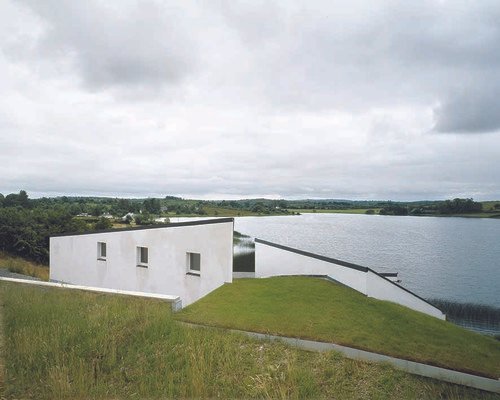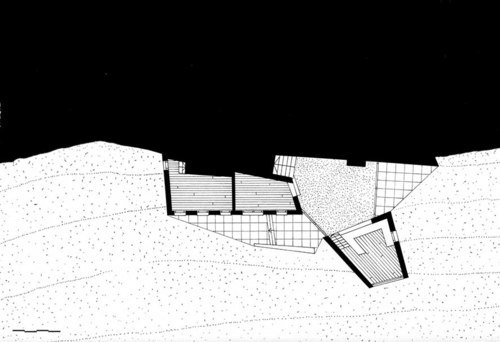INBETWEEN HOUSE
The circulation spaces, the leftover spaces, the common spaces in buildings, are where the user finds an open programme, a temporary void in time, space, and function. These spaces lie in between defined spaces of activity. Children are sent to school to sit in classrooms and learn, yet it is in the corridors that they acquire their most valuable skill: how to negotiate society. Ultimately, in the in-between spaces, it is up to you to take control and decide what to do. What better place to read than on the stairs?
This house is for a couple who work from home, and their two children. They decided to move from central Dublin to a hillside overlooking a lake in Leitrim. The house has two kinds of spaces. The first has distinct functions such as sleeping, cooking, working, and bathing, each in a separate block. These rooms are a defined shape. They have four walls. You know whether you are within the room or outside it. They envelop and protect you. Their individual shapes force you to be aware of the walls, the edges of the enclosure. They require conscious evaluation of shape and size. The windows and doors in these walls give framed views of the landscape.
Between these rooms flows an in-between living and connecting space. It is in this in-between space that the unprogrammed activity goes on, the general stuff of living. These all flow into one another. How they are used is reinvented day after day. Hillside becomes entrance space, becomes reading corner, becomes gathering space. These are spaces that, although charged with atmosphere, are not particular in their suggested use, like a forest clearing or a hilltop plateau.
The house is made of pieces that have a scale and material simplicity akin to rural Irish vernacular houses. This collection of pieces sits in the landscape like a traditional settlement of house and outbuildings. The pieces capture a fluid moment in the landscape, a collection of terraces where the in-between space happens.
By:
Dominic Stevens Architects
Location:
Ballinamore, County Leitrim
Status:
Completed 2003
© Ros Kavanagh






